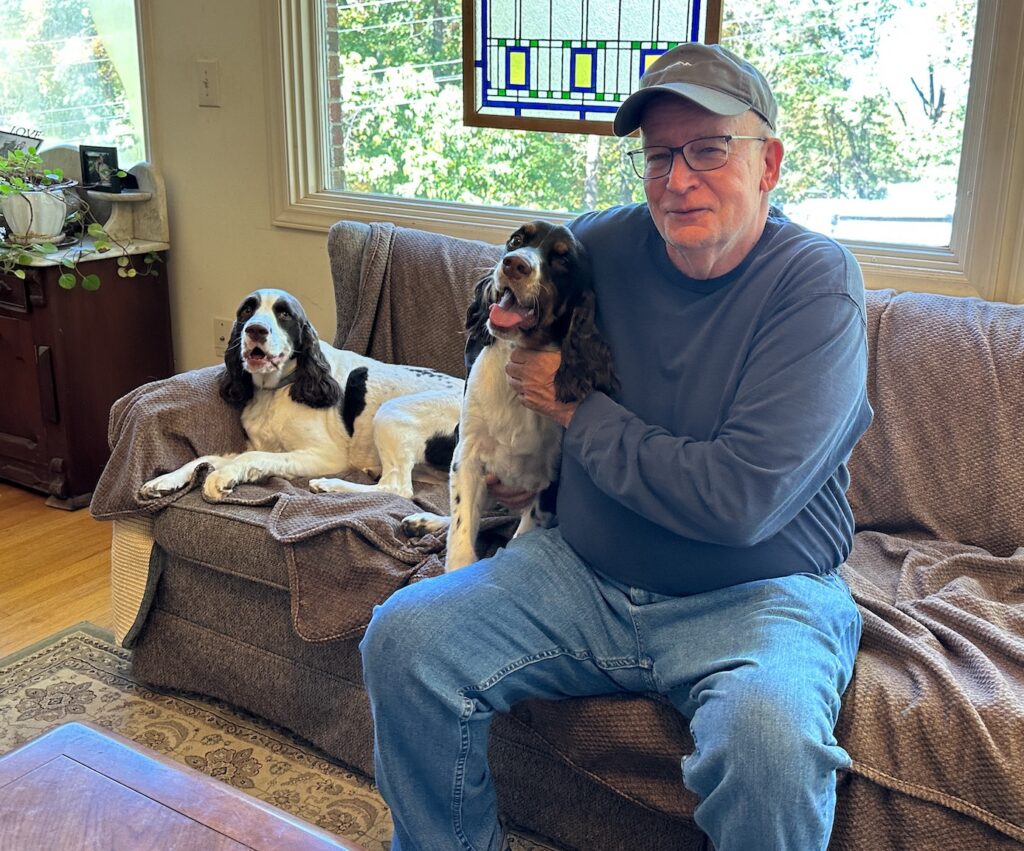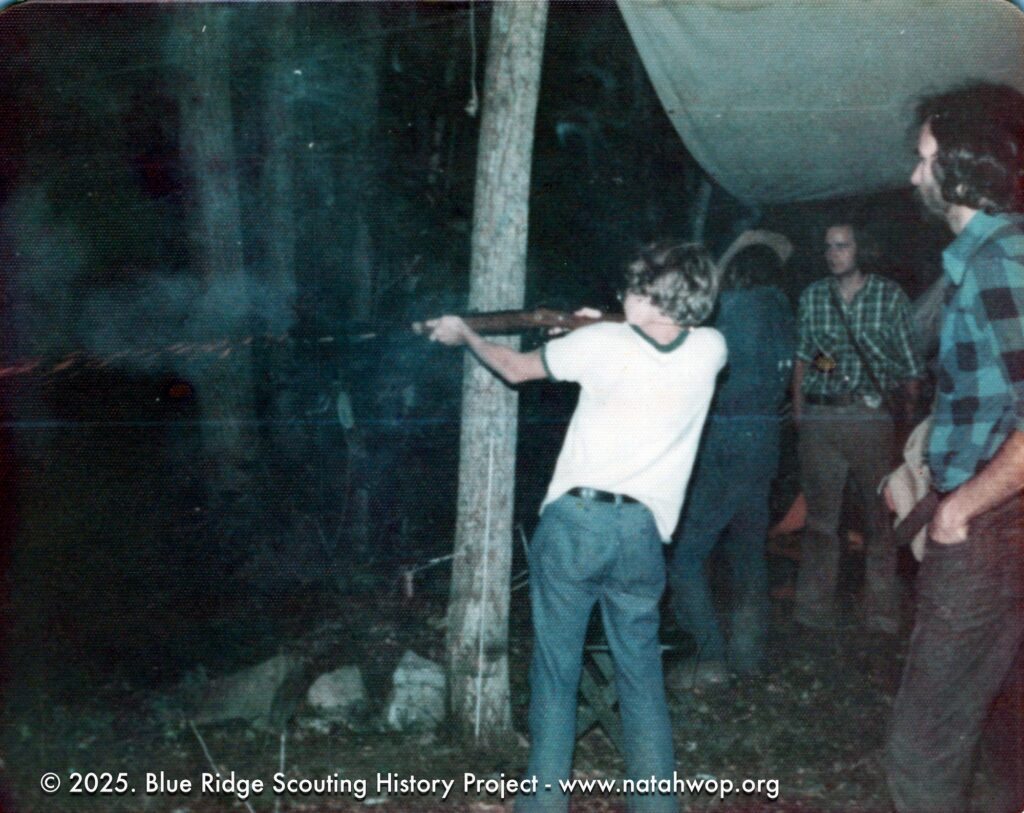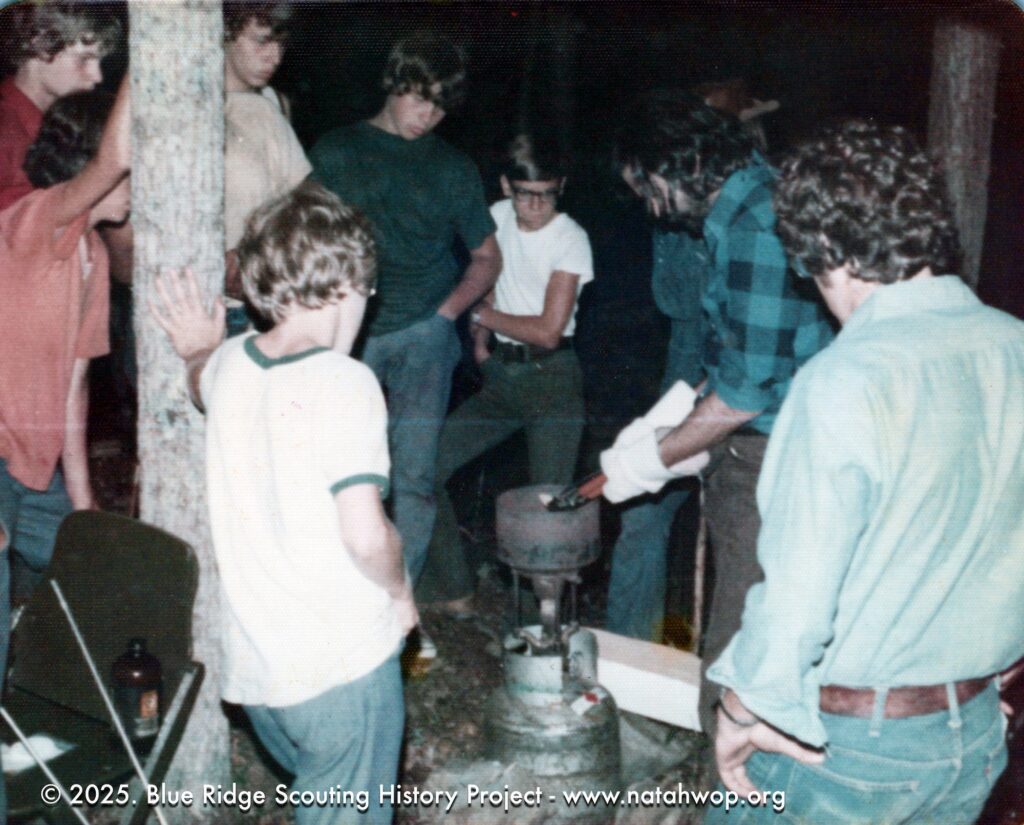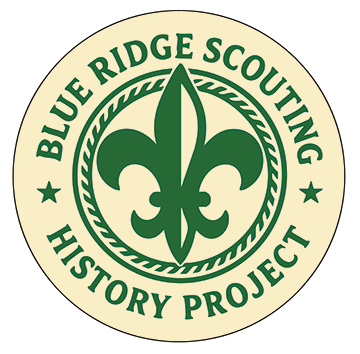by Stephen Warren

A well-known BRSR Camp Staffer from the 1970s, John was also part of the first year of the High Knoll Trail program. He stopped by my house to drop off some of his patches and mugs for the archive, and we spent time reminiscing about his early scouting days.
John Munton was born in 1956 and joined scouting as a Cub while the family lived in Waterloo, Illinois. His father, Harold, worked for the Norfolk and Western Railway and served as a scout leader at St. Peter and Paul Catholic Church.
It is worth noting that Harold Munton received the Scouter’s Key Award and the Silver Beaver Award before being transferred to the railroad’s Roanoke headquarters in 1966. In addition, John recalled that his father was “pretty high up” in the Intermodal Department where he dealt with trailer and flatcar control. Despite these job demands, Harold joined Troop 204 in Roanoke (St. John’s Lutheran Church) as an assistant scoutmaster. In 1967, John became a scout there, where Mr. Rocky Berg was the scoutmaster.
John said the troop liked to camp frequently on Bent Mountain at someone’s farm. He also remembered a backpacking trip to Fullhardt Knob. He was tapped into the Order of the Arrow (Powhatan Lodge 456) around 1970, and made Eagle in 1973. He said his Eagle project involved revitalizing the old spring house at the farm where his troop camped.
In 1970, two scouts in Troop 204 were already working on camp staff at the Blue Ridge Scout Reservation, and John became interested in this. He worked as a volunteer counselor-in-training (CIT) at Camp Powhatan in 1971. In 1972, he served as a nature program merit badge counselor at Camp Powhatan. In 1973, he was the dining hall steward at Camp Ottari, and recalled that his summer became quite challenging when one of the two cooks had to leave camp early for medical reasons. John was enlisted to get up early each morning to help prepare the camp breakfast with the other cook.
John returned to Camp Powhatan in 1974 to work as an instructor at the rifle range. He worked under the supervision of the range director Steve Shedd, and said there was discussion among the staff of a reservation-wide hiking program that might be developed for the following summer. John recalled them talking about what sorts of camps or program areas would make up the trail program, which was to be called “High Knoll.” When it was decided the trail program would go forward, John was hired to work with Steve Shedd as a Black Powder instructor in 1975. He said he was involved with several weekends of trail-cutting work leading up to the opening of High Knoll’s first year.

According to John, the theme of the black powder camp “was to go through all the aspects of making shot, and what it took to shoot black powder back in the day.” He and Steve decided to put the makeshift rifle range in the nearby Little Laurel valley. He said it was intentionally close to camp because they did not have a decent communications system in those days, and they needed to be close in case of an emergency.

Some recollections from that first year included them cutting stencils to paint primitive range targets. He said the program was very low-budget because the council did not put much money into this new program. Staff lived on-site and cooked meals on a small shepherd’s stove. Their black powder program was given one tank of propane to last through the summer, which was to be used for melting lead for rifle shot. He remembered having to boil water every night to clean the guns with soap and water, and then oil them for the next day’s program. He said they used replica Hawken 45-caliber black powder rifles, which was a muzzle-loading rifle used on the prairies during frontier days.

Fortunately, the High Knoll Trail Program was deemed a success by the end of that first summer, but John remembers how the council came up short of funds to pay its staff and they were instead given a small stack of program patches. There was some degree of rarity attributed to these first-year patches, as they could not be purchased and each hiker was only awarded one patch. So the running joke, John said, was that “we were paid in patches.”
John did not return to work at camp the following year — not because of getting shorted on his final paycheck, but because he took a carpentry job and was living on his own. John “aged out” of the scout program and would soon be married in 1978. Together, John and his wife Meg have two sons, Michael and Allen, who also became scouts.
John returned to scouting as an adult in the 1990s when his boys joined Cub Scouts. As an assistant scoutmaster in Troop 221 (Cave Spring United Methodist Church), he was able to join his sons in 1999 when they all hiked the Philmont trails together. John added that his father, Harold, was active for many years in the Blue Ridge Mountains Council as a trainer with Woodbadge and Junior Leader Training (JLT).
John said his boys have grown and are no longer active with scouts locally, so he serves at the council level. Since the late 1990s, he has volunteered as a member of the Eagle Board of Review for Great Valley District. He is retired from Carter Machinery in Salem, and lives in Roanoke County with his wife. He said they frequently travel to see their extended family, and take in the beauty of our national parks and other destinations.


Leave a Reply